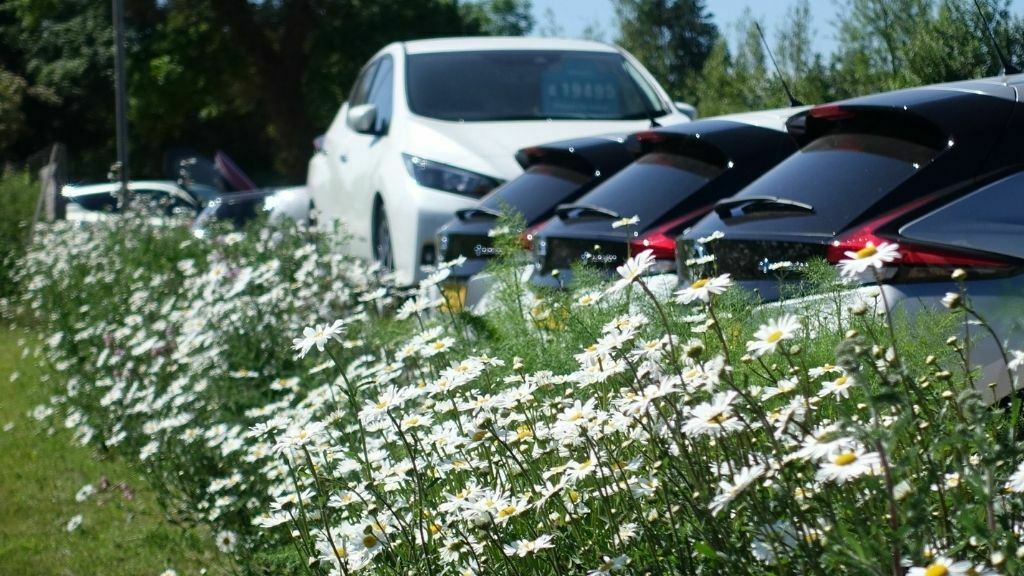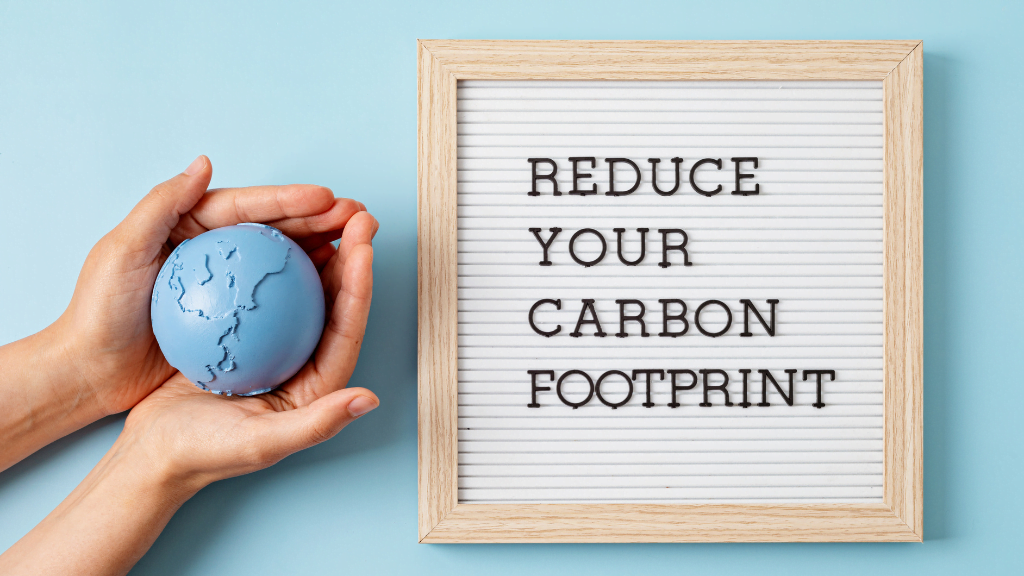Industry and agriculture are responsible for a large amount of pollution problems. However 30% of carbon emissions are produced from our homes. There is a lot we can do as families and households to make our homes and lifestyles greener.

Drive Green is the UK’s largest and best-known used EV specialist. Drive Green was set-up in 2017 as the very first used EVs were starting to become available, we were the first business to get seriously involved in pushing the EV movement further forward by making affordable used EVs available to the masses.
We were first introduced to the Carbon Literacy project in 2021, as a part of a focus group with Autotrader when they were helping to put together the Automotive toolkit, who valued our input due to our existing work towards sustainability.
We got involved with the Project from this, initially to help the Project and Autotrader primarily as I wanted to support the good work both organisations were doing to promote sustainability.
However, from my desire to help the Project, I realised the benefits pursuing Carbon Literacy Accreditation could bring to us at Drive Green, even though were and are already so active in the sustainability space and a very green business.
“I hope to encourage greater staff engagement in what we do to be sustainable.”
My intentions and hopes for joining this accreditation program are twofold.
Firstly, is that I hope that flying the flag of the Carbon Literacy Project and its Accreditation program will help us as advocates of the project and help us encourage other less green businesses to get involved.
Secondly, I hope to encourage greater staff engagement in what we do to be sustainable. At Drive Green, unlike most businesses, we are already as green as possible and always have been, and as a result, the staff don’t need to necessarily be engaged with the green movement to be as green as possible, as being green is already done for them here by our set-up, rules and practices. I would like our team to be pursuing our green goals, not just because they have to, but also because they want to. And it is for this aim that I think the project will be very useful to us.

Drive Green from its very inception has been built to be as green a business as possible and a very active promotor of the sustainability movement.
“We have always endeavoured to do everything as sustainably as possible”
We have always endeavoured to do everything as sustainably as possible and to be carbon neutral in our operations. Despite this, we constantly challenge ourselves as a business and a team to come up with additional ways to be greener in what we do.
As we already do so much (pretty much everything we can think of in fact) it makes it hard to come up with new additional initiatives to improve things here.
Although I personally completed the Carbon Literacy course back in 2021 as part of the first trial of the Automotive toolkit to help the project, this year we have decided to complete the project accreditation program, and as a result, I decided to get my team to complete carbon literacy training themselves. The aim of this was to try to further engage the staff in the sustainability mission of the business and to hopefully gain some fresh ideas as to things we can do to further improve the sustainability of our operations.

This task is not made easy for them, by the fact the business already does so much already to be as green as possible.
“The aim of this was to try to further engage the staff in the sustainability mission of the business, and to hopefully gain some fresh ideas as to things we can do to further improve the sustainability of our operations.”
To help build the team focus around this we closed the business for 2 full mornings so they could all do the course together as a team, and they could be 100% focused upon it.
The afternoon of the second day (after the course had been completed), the team were then given the rest of the day off to go out for a team lunch as a thank you and reward for doing the training, with the purpose of discussing the course, as well as ideas as to some extra things we can do within the business.
The following day we had a meeting for them to present their ideas flowing from what they learned on the course. Again, this isn’t made easy by the fact we do so much already, and certainly, any big measures are already in the fabric of the business, which is the challenge for them.
“it is often the smaller changes that are sometimes even harder, as their results are harder to place significant value on”
Getting the team engaged in doing the training was easy as they are a lovely close team, and they know how passionate I am about sustainability, and how important it is to me that the business is as green as possible.
“We value any idea, not matter how small, if it makes the business greener in any way.”
With this in mind, they understand that even the most minor of things are important to me, which is what helped overcome their challenge regarding new ideas in an organisation that already does so much, as at this point I equally value ‘any idea’, no matter how small. In fact, I have always preached that it is the smaller changes that are sometimes even harder, as their results are harder to place significant value on, however, they are catalysts for greater change as if you can put effort into something minor, putting effort into something major them becomes much easier.

Reduced Paper Use
One suggestion that we are implementing is the reduction of printing done as part of our internal processes. Whilst recycled papers and paper recycling are already being done, this all takes energy that can be saved by reducing printing. We went through what we can reduce and have estimated that we can reduce our regular administrative printing by 75% in buying, 50% in sales, 75% in admin and almost 100% in accounts. This will equate to approx. a 75% reduction in paper usage, which is the current target of this initiative.
“A 75% reduction in our paper usage will save approx. 86kG of CO2 pa”
Last year we printed approx. 15000 pages of paper. This had a carbon cost of 86kG of CO2 (based on Diaz & Arroja CO2 cost estimates) and a financial cost of approx. £672 (source Pinter4You).
Based on our target this means we should save £504 (which I will be putting into the staff social fund as a reward for their efforts), and 65kG of Carbon.
“Our paper usage will be monitored constantly, reviewed regularly, and rewarded “
This paper reduction policy was put in place at the start of March 2024 and will be monitored across the year through a simple ream paper count over the year. This count will be maintained by our general manager. We are expecting to see 1 ream replaced every 6 weeks instead of 2, and this will be monitored via an opening date put on the ream, as a team, we will look again at consumption if the ream needs to be replaced within 6 weeks of opening. At the end of the year, the team will be rewarded based on the team used being under 7.
Whilst this is relatively low in terms of financial impact and carbon impact, it is more significant than I had previously thought, and we will now intend to work towards a completely paper free operation next year, which hopefully after the success of this year’s 75% reduction, this future initiative will be fully supported by the staff.
RESULTS SO FAR
6 months after the start of the paper reduction initiative we have used 7 reams of paper. Despite the pledges and estimates departmentally we have not reached our 75% reduction target, we are not too far off at 53%, with a calculated carbon saving of 23kG of Carbon. Since as a team the 75% target has been missed we have had a further meeting following on from these results to focus on increasing everyone’s paper use efforts, to make sure we hit our 75% target over the next 6 months. There is still more work to be done, but thanks to the engagement and efforts of the staff post their Carbon Literacy training and the monitoring that is taking place, the team remains confident that they will attain their goals. The recent introduction of the digital car window displays will also help figures over the next 6 months, as that alone is forecast to save over 2000 printed sheets.

Using Tech to Help Reduce Waste
In an effort to reduce the paper waste of printing loads of info and price sheets (which are constantly being changed) in car windows, as well as the plastic waste that occurs from damage to the plastic price board signs (which are always getting broken) as well as the sheet holders (which melt/ get broken,) we are now one of the first UK dealers to use digital displays that won’t need replacing, or updating.
These eco-friendly screens, made from recycled plastic, eliminate the need for paper info sheets and plastic price boards. The car window display materials have been a frustration of mine for a while, and while we use recycled paper and eco-laminating pouches, there is definitely a lot of paper as well as plastic waste. Thanks to this new technology we have the solution, and as a bonus, it is enhancing the customer experience by putting even more EV info at their fingertips on their phone screens.
The second is the reduction of single use plastics being brought into work by the staff, for their lunches etc. Previously in 2022 for 12 months we ran an individual incentive where each staff member was paid £2 for each day they didn’t bring anything into the office that involved single use packaging. This was very effective however, when I stopped the payment (hoping behaviours were now changed after a year) the team immediately went back to their old ways.

“This shows the staff’s engagement and willingness to make personal compromises to be greener”
I am very pleased to say that following the Carbon Literacy Training course the team would like to do this again, however this time without any individual incentive. This time for every day the whole team don’t bring in anything in single use packaging I am going to put £5 into a staff social fund.
This is an outcome I am pleased with and shows the staff’s engagement and willingness to make personal compromises to be greener.
My personal target is for no single use plastics to be brought into work by the staff at all, however I have to remain respectful of their personal freedoms and as a result, restrictions will not be enforced. It will be rewarded, but it will remain voluntary.
As a result, I am targeting the staff with hopefully only 1 day a week not being fully single use packaging free.
“whether the office has remained single use plastic free will be recorded daily, and then rewarded and reviewed monthly”
This will logged daily by the general manager and recorded monthly in our KPI’s, to ensure money gets allocated to their social fund, so we can monitor its success. I am hoping that group accountability will make it more long term successful, and hopefully also lead to better staff practises outside of work.
As a general rule, 0.7kG of single use plastic is recycled from the office each week, with a carbon cost of approx. 117kg of CO2 pa, so hopefully we can significantly reduce this to under 20kG.
“I am hopeful that group accountability will make it more successful in the long-term, and hopefully also lead to better staff practises outside of work.”
The team’s performance on both measures will be reviewed monthly and re-assessed and re-motivated according to the hitting of targets.
Hopefully, the reward element will help keep the team on track to achieve these targets and hopefully surpass them, as the long-term aim will be to get single-use packaging and paper usage to zero.

Whilst due to the volume of the green measures we already have in place here at Drive Green the new initiatives that have come from the Carbon Literacy training of the staff, are arguably minor in volume, they are still significant, and more importantly, they show more staff engagement with the green goals of the business as well as greater awareness of efforts and rewards. The fact that the staff are prepared to go to such lengths for such relatively minor measures I think speaks volumes of the effect the program has had on them, and is hugely encouraging.
This effort and engagement from the team shows how good the Carbon Literacy training is and how it can benefit every business and its employees.
Completely Green Limited is authorised and regulated by the Financial Conduct Authority. Firm Reference number – 790525. We are a broker and not a lender. If you are not happy with the service you have received, you have the right to refer your complaint to the Financial Ombudsman Service.
Please note: Whilst every effort has been made to ensure the accuracy of the used vehicle information and images on this website, some errors may occur. It is important that you do not rely solely on this information, prices or images, and check with us any items that may affect your decision to purchase a vehicle. For an example monthly price, please use the finance calculator on each listing to retrieve a quotation. Representative Hire Purchase Example: Total Deposit: £2000 and Agreement Duration: 48 Months. Representative Personal Contract Purchase Example: Total Deposit: £2000 and Agreement Duration: 48 Months and 8000 miles pa. Representative Personal Contract Hire Example: Total Deposit: 12 months initial rental and 5000 miles pa, and Agreement Duration: 48 Months and Admin Fee: £299. Risk based variable lending rates apply with rates starting from 6.9% APR.